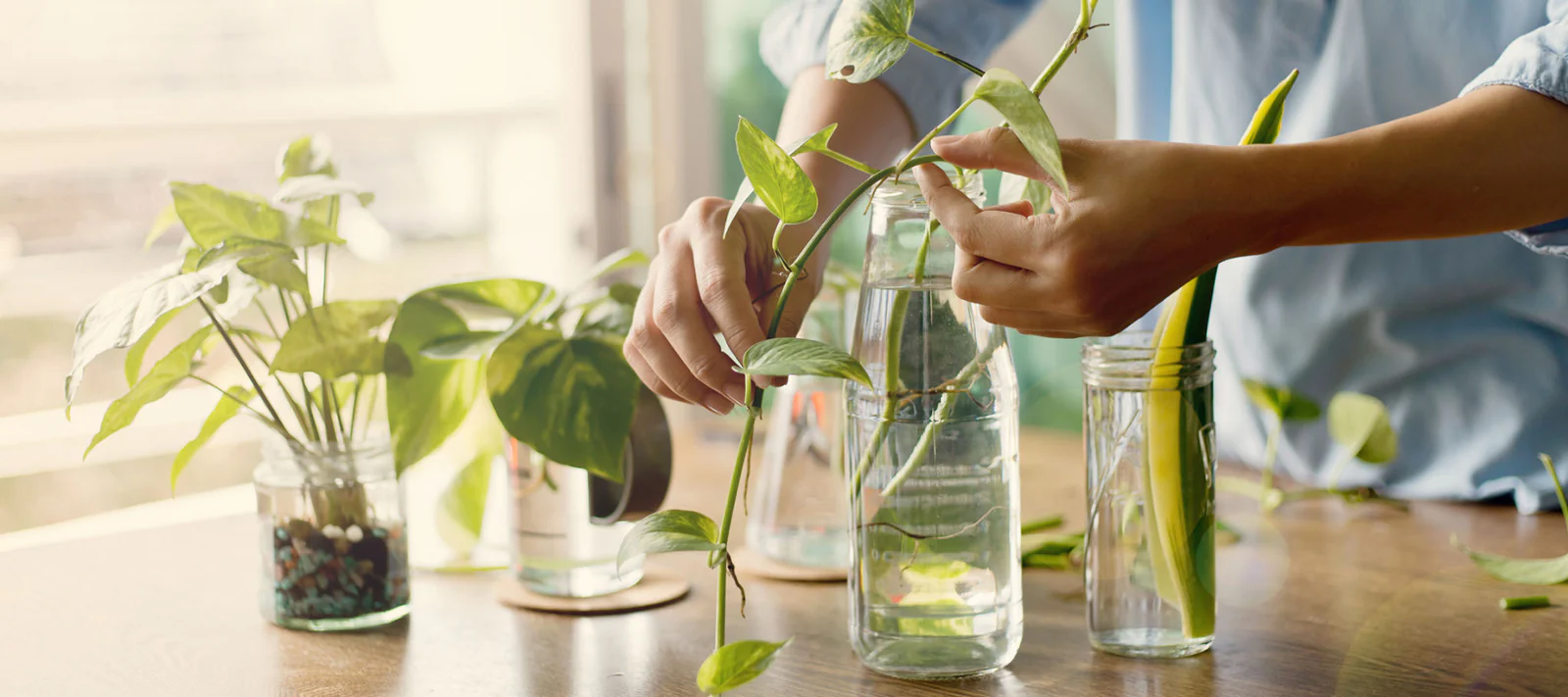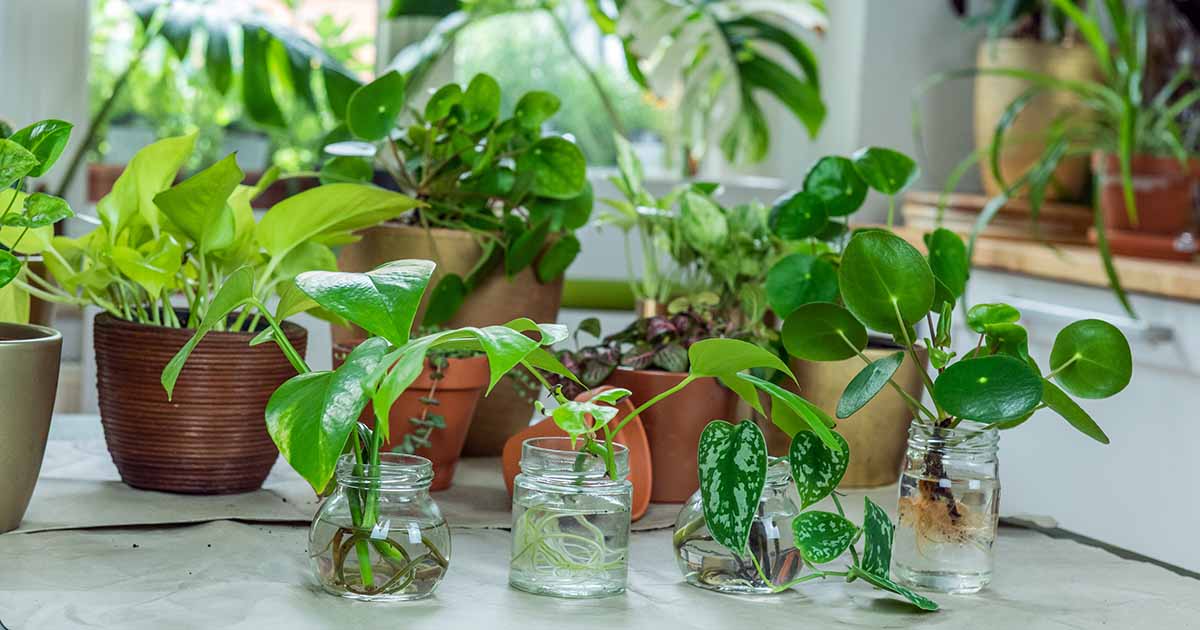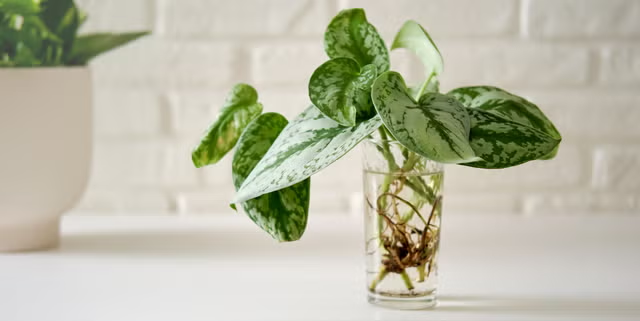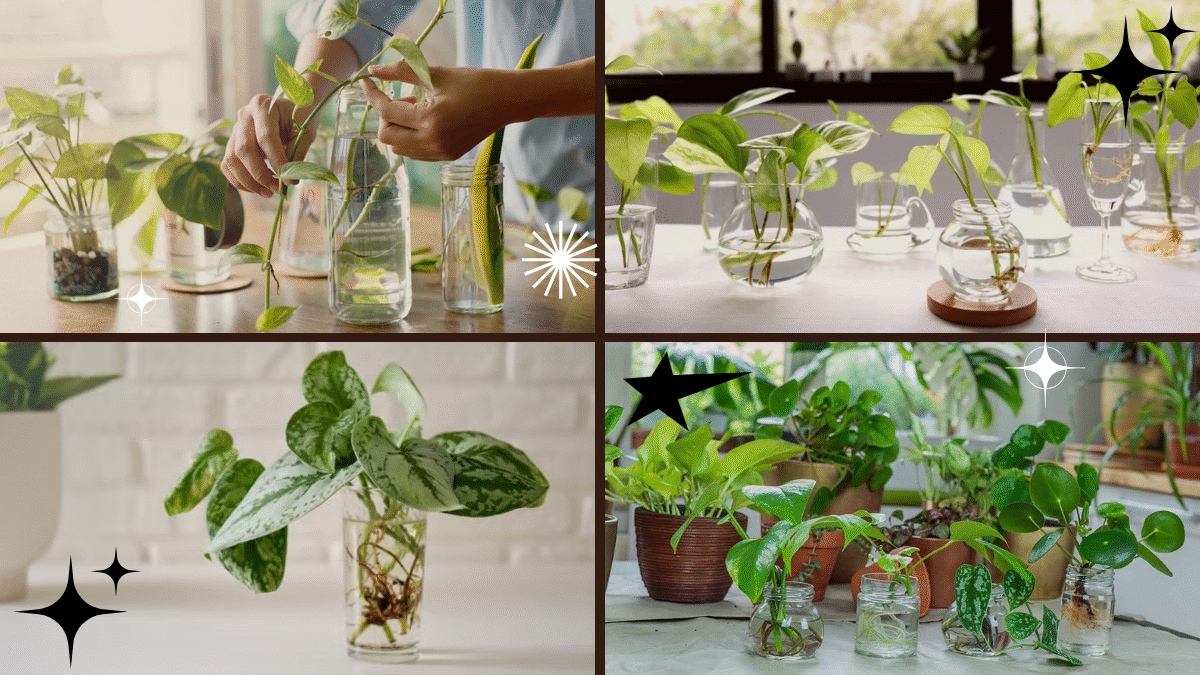There’s something truly magical about watching a tiny cutting transform into a thriving plant. Propagating plants is not just a cost-effective way to expand your garden; it’s also a deeply satisfying process that connects you with nature on a personal level. Whether you want to multiply your favorite flowers, grow new herbs, or create a backyard brimming with life, learning how to propagate plants is a skill every gardener should master.
In this comprehensive guide, we’ll explain how to propagate plants for your garden using various methods. You’ll learn what tools you need, when to propagate, the best techniques for different plant types, and practical aftercare tips to ensure success.

What Is Plant Propagation?
Plant propagation is the process of creating new plants from existing ones. It can be done naturally (through seeds and runners) or with a gardener’s help using cuttings, division, layering, and more. The main benefit? You can multiply plants without buying new ones — and often with faster results.

Why Should You Propagate Plants?
Here’s why propagation is worth adding to your gardening skills:
- Save money on new plants
- Preserve rare or heirloom varieties
- Share plants with friends and family
- Control your garden’s layout and variety
- Increase your garden’s biodiversity

When Is the Best Time to Propagate Plants?
The ideal propagation time depends on the plant type and propagation method:
- Spring to early summer is typically best for most plants, as they’re in active growth.
- Late summer to early fall works well for hardwood cuttings and root division.
- Always avoid propagating when a plant is stressed, dormant, or in full bloom.

Different Methods of Plant Propagation
Let’s break down the most popular propagation techniques and how to do them successfully:
1. Propagation by Seeds
Seed propagation is the most natural way to grow plants, though it can take longer than other methods.
How to Do It:
- Collect seeds from healthy, mature plants.
- Sow them in seed trays or pots filled with seed-starting mix.
- Lightly cover with soil and mist with water.
- Place in a warm, bright location.
- Keep the soil consistently moist until germination.
Best for:
Vegetables, annual flowers, herbs, native plants.
Tip: Soak hard-coated seeds (like morning glories or nasturtiums) overnight before planting to improve germination.
2. Propagation by Cuttings
Cuttings propagation involves taking a part of a plant — usually a stem, leaf, or root — and encouraging it to grow roots.
Types of Cuttings:
- Softwood cuttings: New, flexible growth (spring-early summer)
- Semi-hardwood cuttings: Partially mature wood (summer-early fall)
- Hardwood cuttings: Dormant, woody stems (fall-winter)
How to Do It:
- Use clean, sharp scissors to cut a healthy, disease-free section of the plant.
- Remove lower leaves, leaving 2-4 at the top.
- Dip the cut end in rooting hormone (optional, but helpful).
- Plant in a pot with well-draining soil or a mix of peat and perlite.
- Mist and cover with a plastic bag to maintain humidity.
- Place in bright, indirect light and keep soil moist.
Best for:
Herbs, houseplants, roses, hydrangeas, coleus, succulents.
3. Propagation by Division
Division involves splitting a mature plant into several parts, each with roots and shoots attached.
How to Do It:
- Remove the plant from the ground or pot.
- Gently shake off excess soil.
- Use your hands, a sharp knife, or spade to separate clumps.
- Replant divisions immediately in prepared soil or pots.
- Water thoroughly.
Best for:
Perennials like hostas, daylilies, ferns, ornamental grasses.
Tip: Divide plants in early spring or after blooming in fall for best results.
4. Propagation by Layering
Layering encourages a plant stem to form roots while still attached to the parent plant.
How to Do It:
- Select a flexible, healthy stem.
- Bend it down to the soil surface.
- Remove leaves from the section touching the soil.
- Bury that part under a few inches of soil, securing with a stone or U-shaped pin.
- Keep soil moist.
- Once roots form, cut the new plant from the parent and transplant it.
Best for:
Strawberries, raspberries, trailing shrubs, climbing vines, philodendrons.
5. Propagation by Grafting
Grafting involves joining parts of two plants — a rootstock and a scion (shoot or bud) — so they grow as one.
How to Do It:
- Choose compatible plants.
- Cut both the scion and rootstock at matching angles.
- Join their cut surfaces and secure with grafting tape.
- Keep in a sheltered, humid location until the graft heals.
Best for:
Fruit trees, roses, ornamental trees.
Tools You’ll Need for Propagation
To make your propagation process smooth and successful, gather:
- Sharp pruning shears or scissors
- Clean, sterilized knife
- Rooting hormone powder or gel
- Potting mix or seed-starting soil
- Seed trays, small pots, or containers
- Plastic bags or propagation dome
- Spray bottle
- Labels or plant markers
Tip: Always clean your tools before and after use to prevent disease transfer.
Aftercare for Newly Propagated Plants
Once your new plants are in their growing medium, follow these care tips:
- Light: Bright, indirect light is best for young cuttings and seedlings.
- Water: Keep soil consistently moist but not soggy.
- Humidity: Use plastic covers or mist regularly to maintain humidity.
- Temperature: Maintain a warm, stable environment around 65-75°F (18-24°C).
- Gradual Adjustment: Once established, gradually expose new plants to more light and outdoor conditions.
Common Propagation Mistakes and How to Avoid Them
- Overwatering: Leads to rot. Keep soil slightly moist, not waterlogged.
- Using unhealthy cuttings: Always pick disease-free, vigorous growth.
- Skipping callus formation: Some cuttings (like succulents) need to callus over before planting.
- Neglecting humidity: Dry air can cause cuttings to shrivel. Cover with plastic to trap moisture.
- Insufficient light: New plants need plenty of indirect light for photosynthesis.
Conclusion
Propagating plants for your garden isn’t just a money-saving technique — it’s an enriching way to connect with your plants and extend the life of your garden favorites. Whether you choose seed sowing, taking cuttings, or dividing perennials, propagation gives you the power to fill your garden with new life, color, and creativity.
Start experimenting with one or two propagation methods, and soon you’ll have a flourishing garden filled with plants you nurtured yourself. Once you master the basics, you might even find yourself swapping cuttings with friends, passing down cherished plants, and enjoying a personal, thriving plant collection for years to come.





Leave A Comment